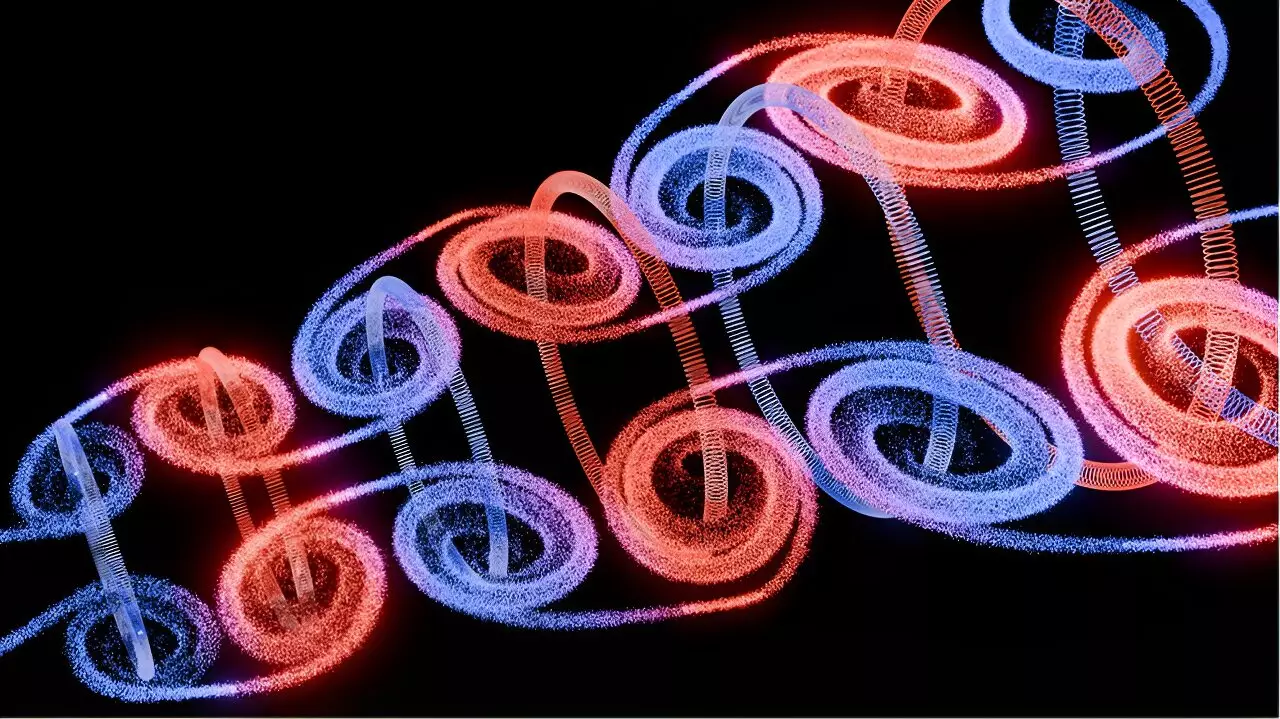A recent study published in Nature Communications sheds light on the optical analog of the Kármán vortex street (KVS) and its potential applications in various fields. Collaborating physicists from Singapore and the UK have delved into the fascinating parallels between fluid dynamics and structured light, introducing a new type of light pulse with striking similarities to the KVS.
Lead author Yijie Shen, from Nanyang Technological University, describes the structured light pulse as having a field structure reminiscent of the Kármán vortex street, a pattern of swirling vortices observed in fluid dynamics. This unique optical pulse, known as nondiffracting supertoroidal pulses (NDSTPs), showcases robust topological structures similar to skyrmions in condensed matter.
Unlike previous optical skyrmionic beams and pulses that are limited by diffraction, NDSTPs do not spread during propagation and can persist over long distances. This opens up a myriad of potential applications including light-matter interactions, super resolution microscopy, metrology, and more.
Skyrmions, nanoscale magnetic vortices with unique textures, have been a topic of interest for researchers. The ability of NDSTPs to maintain skyrmionic field configurations during propagation offers insights into the dynamics of electromagnetic fields and could serve as directed energy channels for information transfer applications.
Intersection of Science and Humanities
The historical significance of the Kármán vortex street is highlighted by its portrayal in art and its impact on engineering. From the picturesque vortices depicted in a painting in the Church of St Dominic to the catastrophic consequences of vortex streets on the Tacoma Narrows Bridge, there is a fascinating intersection of science and the humanities.
The deeply subwavelength singularities present in NDSTPs hold promise for applications in metrology and spectroscopy. The topological features of these pulses could potentially be leveraged for long-distance information transfer in fields such as telecommunications, remote sensing, and LiDAR, opening up new avenues for technological advancements.
The optical analog of the Kármán vortex street presents a new frontier in the study of structured light and its applications across various disciplines. By bridging the gap between fluid dynamics and optical physics, researchers have unlocked a realm of possibilities for future technologies and scientific discoveries.


Leave a Reply